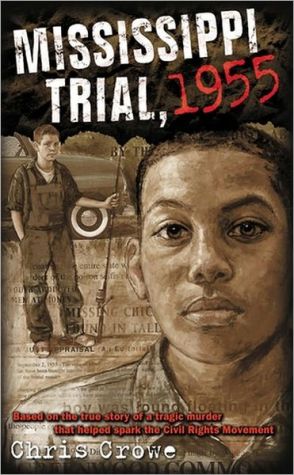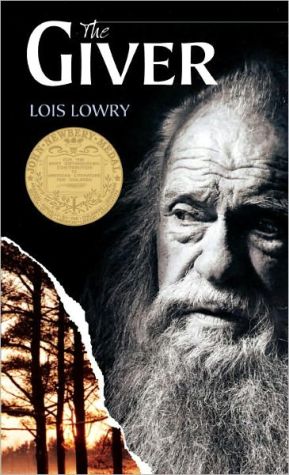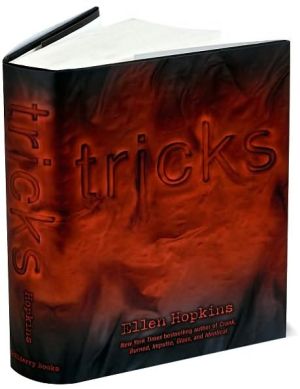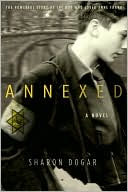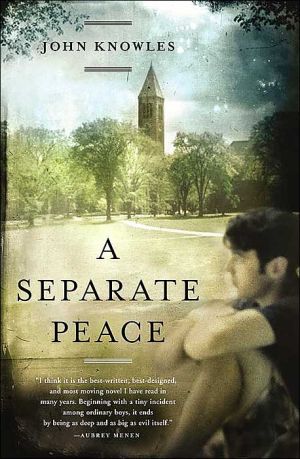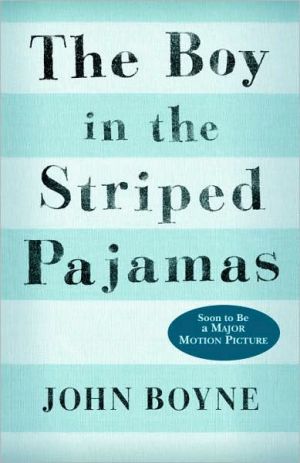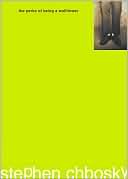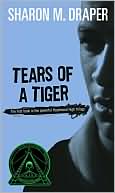Mississippi Trial 1955
At first Hiram is excited to visit his hometown in Mississippi. But soon after he arrives, he crosses paths with Emmett Till, a black teenager from Chicago who is also visiting for the summer, and Hiram sees firsthand how the local whites mistreat blacks who refuse to "know their place." When Emmett's tortured dead body is found floating in a river, Hiram is determined to find out who could do such a thing. But what will it cost him to know? Mississippi Trial, 1955 is a gripping read, based...
Search in google:
At first Hiram is excited to visit his hometown in Mississippi. But soon after he arrives, he crosses paths with Emmett Till, a black teenager from Chicago who is also visiting for the summer, and Hiram sees firsthand how the local whites mistreat blacks who refuse to "know their place." When Emmett's tortured dead body is found floating in a river, Hiram is determined to find out who could do such a thing. But what will it cost him to know? Mississippi Trial, 1955 is a gripping read, based on true events that helped spark the Civil Rights Movement.KLIATTA 14-year-old boy named Emmett Till from Chicago, visiting his relatives in the Mississippi Delta in 1955, was accused of speaking disrespectfully to a white woman. He was kidnapped and murdered. Most people in town knew who the murderers were but at the trial, those arrested were acquitted by a "jury of their peers" e.g., white men. Chris Crowe uses the facts of this historical event, which outraged many people across the nation and was a factor in the success of the Civil Rights Movement, to tell a fictional story narrated by a white boy awakened to the truth of racial hatred. Hiram is this narrator. He is having trouble with his father who is having trouble with his father, Hiram's grandfather. Hiram was left with his grandparents during the war and later, when his father was getting graduate degrees to enable him to take the family away from the South. The memory of his time in the small Southern town with his grandparents is dear to him and he can't understand why his father wants to get as far away from the South as he can taking a job in Arizona. Hiram is away for some years until the grandfather suffers a stroke and Hiram asks to return for the summer to help out. This is the summer of Emmett Till's murder. Crowe tells convincingly how Hiram loves the South and later how appalled he is at the worst of the tradition there of Jim Crow and segregation and hatred. An 18-year-old bully, once a kind of childhood friend of Hiram's, torments Emmett Till in Hiram's presence, which horrifies Hiram and prepares him for his outrage at Emmett's eventual murder. Black characters such as Ruthanne,
\ From The Critics"My dad hates hate." With this compelling opening line, Chris Crowe draws readers into his first novel for adolescents. It is the story of 16-year-old Hiram Hillburn, who lives with his family in Arizona, but who longs to visit Greenwood, Mississippi, and the grandfather who helped raise him. And it is also the story of the disappearance, torture, and murder of 14-year-old Emmett Till, a Black teen who was visiting Greenwood, Mississippi, from his Chicago home during the summer of 1955. When Hiram convinces his parents to let him spend the summer in Greenwood, he finally beings to understand why his father had to leave; he begins to appreciate his father's stance against injustice and prejudice. The lessons require that he learn about the ugly side of his own grandfather's past, and the man's part in the murder of Hiram's young Black friend, Emmett Till. Crowe never lets the story line lag for the sake of adding historical details. Instead, he expertly infuses fact with human feeling. He shows us how desperately Hiram wants to help when he sees Emmett Till tortured by White kids, who gut a fish and hold let the blood drip all over Emmett, a scene that foreshadows the torture and murder that a group of White men later commit. Crowe helps us feel the humidity and heat of the Mississippi courtroom when the men responsible for Emmett's death are found innocent. And he teaches us the power of a teen's strength, hope, understanding, and love, even in the face of the prejudice and hatred of adults around him. The book is reminiscent of Mildred Taylor's Roll of Thunder, Hear my Cry in Crowe's powerful treatment of a serious subject and his graceful, careful use of language. 2002, PhyllisFogelman Books, , . Ages young adult. \ — Sissi Carroll\ \ \ \ \ Children's LiteratureCrowe uses fiction to retell the story of the Emmett Till murder of 1955, which sparked the Civil Rights Movement. The Mississippi Delta is seen through the eyes of Hiram Hillburn¾at first idyllically as a young boy, then more realistically when he returns to visit his beloved grandfather during his sixteenth summer. Crowe's approach works surprisingly well. Hiram develops as a character through his relationships with the southerners around him¾his grandparents, the family's black cook, his friends. The neighboring Remington brothers¾though only secondary characters¾nearly overwhelm the rest as a fascinating cross of Welty/Faulkner. With Hiram's involvement in the trial and its depressing, if certain, conclusion, he finally comes of age. This is a thoughtful story that rises above a mere retelling of one episode in the South's racist past. 2002, Phyllis Fogelman Books, \ — Kathleen Karr\ \ \ KLIATTA 14-year-old boy named Emmett Till from Chicago, visiting his relatives in the Mississippi Delta in 1955, was accused of speaking disrespectfully to a white woman. He was kidnapped and murdered. Most people in town knew who the murderers were but at the trial, those arrested were acquitted by a "jury of their peers"—e.g., white men. Chris Crowe uses the facts of this historical event, which outraged many people across the nation and was a factor in the success of the Civil Rights Movement, to tell a fictional story narrated by a white boy awakened to the truth of racial hatred. Hiram is this narrator. He is having trouble with his father who is having trouble with his father, Hiram's grandfather. Hiram was left with his grandparents during the war and later, when his father was getting graduate degrees to enable him to take the family away from the South. The memory of his time in the small Southern town with his grandparents is dear to him and he can't understand why his father wants to get as far away from the South as he can—taking a job in Arizona. Hiram is away for some years until the grandfather suffers a stroke and Hiram asks to return for the summer to help out. This is the summer of Emmett Till's murder. Crowe tells convincingly how Hiram loves the South and later how appalled he is at the worst of the tradition there of Jim Crow and segregation and hatred. An 18-year-old bully, once a kind of childhood friend of Hiram's, torments Emmett Till in Hiram's presence, which horrifies Hiram and prepares him for his outrage at Emmett's eventual murder. Black characters such as Ruthanne,\ \ \ \ \ VOYAThis novel held my interest because of all the emotional events in the story. Crowe did a good job of expressing the deep emotions felt by the characters. The way the author wrote out the southern accents of many characters made the story more believable. I think this book conveyed a strong message about life in the South during the 1950s. It would probably appeal most to teens interested in that era. VOYA CODES: (Better than most, marred only by occasional lapses; Will appeal with pushing; Middle School, defined as grades 6 to 8; Junior High, defined as grades 7 to 9). 2002, Phyllis Fogelman Books/Penguin Putnam, 240p, \ — Kristen Moreland, Teen Reviewer\ \ \ \ \ School Library JournalGr 6-8-While visiting relatives in Mississippi, Emmett Till, 14, spoke "ugly" to a white woman and was subsequently tortured and murdered. Two men were arrested and tried for this heinous crime, but in spite of substantial evidence, were found not guilty. Crowe has woven the plot of his novel around these historical events. Hiram, the fictional main character, had lived with his grandparents in Mississippi as a child. Now 16, he returns to visit his aging grandfather, where he meets Emmett Till. He also renews a childhood acquaintance with R.C. Rydell, a redneck bully. When Emmett's mutilated body is found, Hiram immediately suspects that R.C. was involved. In a predictable twist at the end, he learns that it was his grandfather, not R.C., who helped the murderers. The Deep South setting is well realized. Descriptions of the climate, food, and landscape are vivid and on target. Likewise, Southern racial attitudes from the period are accurately portrayed. Grampa is a racist but Hiram enables readers to see his good qualities as well. Hiram himself seems rather naive. He is unable to fathom the racial prejudice at the root of his father's alienation from his grandfather. Nor does he feel the aura of racial fear and hatred that hangs over the entire region. The novel succeeds in telling Emmett Till's story, but there is an emotional distance that keeps readers from caring as deeply as they should about this crime. Still, it is a story that needs to be told. This book belongs in all collections to show young readers the full range of American history.-Bruce Anne Shook, Mendenhall Middle School, Greensboro, NC Copyright 2002 Cahners Business Information.\ \ \ \ \ Kirkus ReviewsHistorical fiction examines the famous case of Emmett Till, whose murder was one of the triggers of the civil-rights movement. Hiram Hillburn knows R.C. Rydell is evil. He watches R.C. mutilate a catfish, but does nothing to stop him. "I didn't want to end up like that fish," he says. He watches R.C. throw stones at a neighbor's house and humiliate 14-year-old Emmett Till, an African-American visitor from Chicago, and still he does nothing. Hiram says, "When things are scary or dangerous, it's hard to see clear what to do." When Till is brutally murdered, Hiram is sure R.C. is involved. Hiram, a white teenager who has come back to the Mississippi town where his father grew up, is the narrator and the perspective of the white outsider and the layers of his moral reflection make this an excellent examination of a difficult topic. When the case comes to trial, Hiram knows he must face his own trial: can he stand up to evil and do the right thing? He knows Mr. Paul, the local storeowner, is right: "Figure out what's right and what's wrong, and make yourself do the right thing. Do that and no matter what happens, no matter what people say, you'll have no regrets." This is a complicated thing to do, as Hiram must summon inner strength and come to terms with who he is-the son of an English professor who hates everything about the South and the grandson of a farmer who loves everything about it. Teen readers will find themselves caught up in Hiram's very real struggle to do the right thing. (Fiction. YA)\ \
